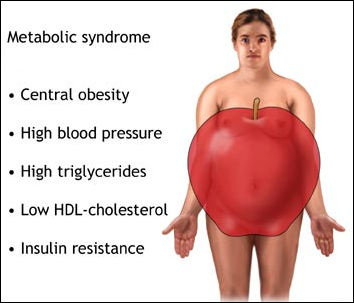Body
Composition and Metabolic Changes in the SMART Treatment Interruption
Trial
 |
 |
 |
 |
 |
 |
 |
| SUMMARY:
Intermittent antiretroviral therapy (ART) was associated
with increased subcutaneous fat, but no changes in visceral
abdominal fat, according to an analysis from the large
SMART treatment interruption trial published in the
January
2010 issue of AIDS. In addition, levels of
both LDL (bad) and HDL (good) cholesterol decreased,
while one measure of blood glucose increased. |
|
 |
 |
 |
 |
 |
 |
 |
By
Liz Highleyman
Cycles of intermittent therapy have been proposed as a strategy
for reducing side effects and toxicities associated with antiretroviral
drugs, including lipodystrophy (body fat changes) and abnormal
blood lipid levels associated with increased cardiovascular risk.
But the SMART trial and other studies of CD4 cell-guided treatment
interruption have shown that this is a potentially risky approach.

As
previously reported, SMART included more than 5000 mostly
treatment-experienced participants with a baseline CD4 cell count
above 350 cells/mm3. They were randomly assigned to either remain
on continuous ART ("viral suppression" arm) or to interrupt
therapy while their CD4 count was above 350 cells/mm3 and resume
when it fell to 250 cells/mm3 ("drug conservation" arm).
The study was discontinued prematurely in January 2006 after data
analysis showed that participants in the treatment interruption
arm not only had a higher rate of AIDS-related opportunistic illness
and death from any cause, but also were more likely to develop
serious cardiovascular, liver, and kidney disease.
Members of the INSIGHT-SMART study group have performed numerous
analyses looking at different aspects of the data. For example,
they previously reported that patients taking intermittent therapy
had higher
levels of blood biomarkers associated with inflammation, coagulation,
and cardiovascular disease.
In the present analysis, Esteban Martinez from the University
of Barcelona and colleagues assess the effects of intermittent
ART exposure on body fat and metabolic parameters.
Participants at 33 sites were co-enrolled in the SMART Body Composition
sub-study. This analysis included a total of 275 patients, 142
randomly assigned to the treatment interruption arm and 133 assigned
to the continuous therapy arm. Most (81%) were men, about three-quarters
were on ART at study entry, and 58% had baseline HIV RNA <
400 copies/mL.
Participants were followed for a median of 2 years. Investigators
assessed regional fat levels annually using whole-body dual-energy
X-ray absorptiometry (DEXA) and abdominal computed tomography
(CT) scans. Fasting metabolic parameters were assessed at months
4 and 8, and then annually.
Results
 |
At
the 12-month analysis, patients in the treatment interruption
group had been on ART for 2.7 months, or 22% of follow-up
time. |
 |
By
month 12, limb fat increased by 9.0% in the intermittent therapy
group and remained stable (-0.8%) in the continuous therapy
group, for an estimated difference of 9.8% (P = 0.003). |
 |
Subcutaneous
(under the skin) abdominal fat increased in both groups, with
a borderline significant difference of +14.3 cm2 in the intermittent
therapy group (P = 0.05). |
 |
Both
groups gained visceral (internal) abdominal fat by 12 months,
but the between-group difference was not statistically significant
(-2.1% difference; P = 0.72). |
 |
There
were no significant differences in satisfaction with body
image reported by participants. |
 |
Blood
lipids levels significantly decreased in the treatment interruption
group by month 4, and between-group differences persisted
throughout the follow-up period (P < 0.001). |
 |
By
12 months, hemoglobin A1C (a measure of blood glucose over
time) increased in the intermittent therapy group (+0.3%)
while remaining stable in the continuous therapy group (P
= 0.003). |
 |
However,
changes in other related measures including standard blood
glucose, insulin level, and insulin resistance (HOMA) were
not statistically significant. |
Based on these findings, the study authors concluded, "After
12 months, intermittent antiretroviral therapy increased subcutaneous
fat, had no effect on visceral abdominal fat, decreased plasma
lipids, and increased hemoglobin A1C compared with continuous
antiretroviral therapy."
"In the SMART Body Composition substudy, the strategy of
intermittent ART in HIV-infected patients had significant effects
on body fat and plasma lipids," they elaborated in their
discussion. "For most endpoints, the treatment difference
was fully evident at 12 months and did not increase with longer
follow-up."
"All plasma lipids decreased significantly in the [intermittent
therapy] group as compared with the [continuous therapy] group,"
they continued. "Our study showed rapid decrease in lipids
after ART discontinuation, which mirrored the increase in lipids
after starting ART reported in other studies.:
"The decrease in plasma lipids associated with ART interruption
was initially considered to be a positive effect," they noted.
"However, low HDL cholesterol would be expected to increase
the risk of cardiovascular disease even if LDL cholesterol is
low."
Hospital Clínic, Institut d'Investigacions Biomediques
August Pi i Sunyer, University of Barcelona, Barcelona, Spain;
Absolute Care Medical Center, Atlanta, GA; University of Minnesota,
Minneapolis, MN; Veterans Affairs Medical Center, Washington,
DC; Denver Public Health, Denver, CO; National Centre in HIV Epidemiology
and Clinical Research, University of New South Wales, Sydney,
Australia; AltaMed Health Services, Los Angeles, CA: Mortimer
Market Centre, University College Hospital, London, UK; Center
for Infection and Immunity (CINIMA), Academic Medical Center,
Amsterdam, Netherlands; Harlem Hospital and Columbia University,
New York, NY; St. Vincent's Hospital, University of New South
Wales, Sydney, Australia.
2/16/10
Reference
E
Martinez, F Visnegarwala, B Grund, and others (INSIGHT-SMART study
group). The effects of intermittent, CD4-guided antiretroviral
therapy on body composition and metabolic parameters. AIDS 24(3):
353-563 (Abstract).
January 2010.
